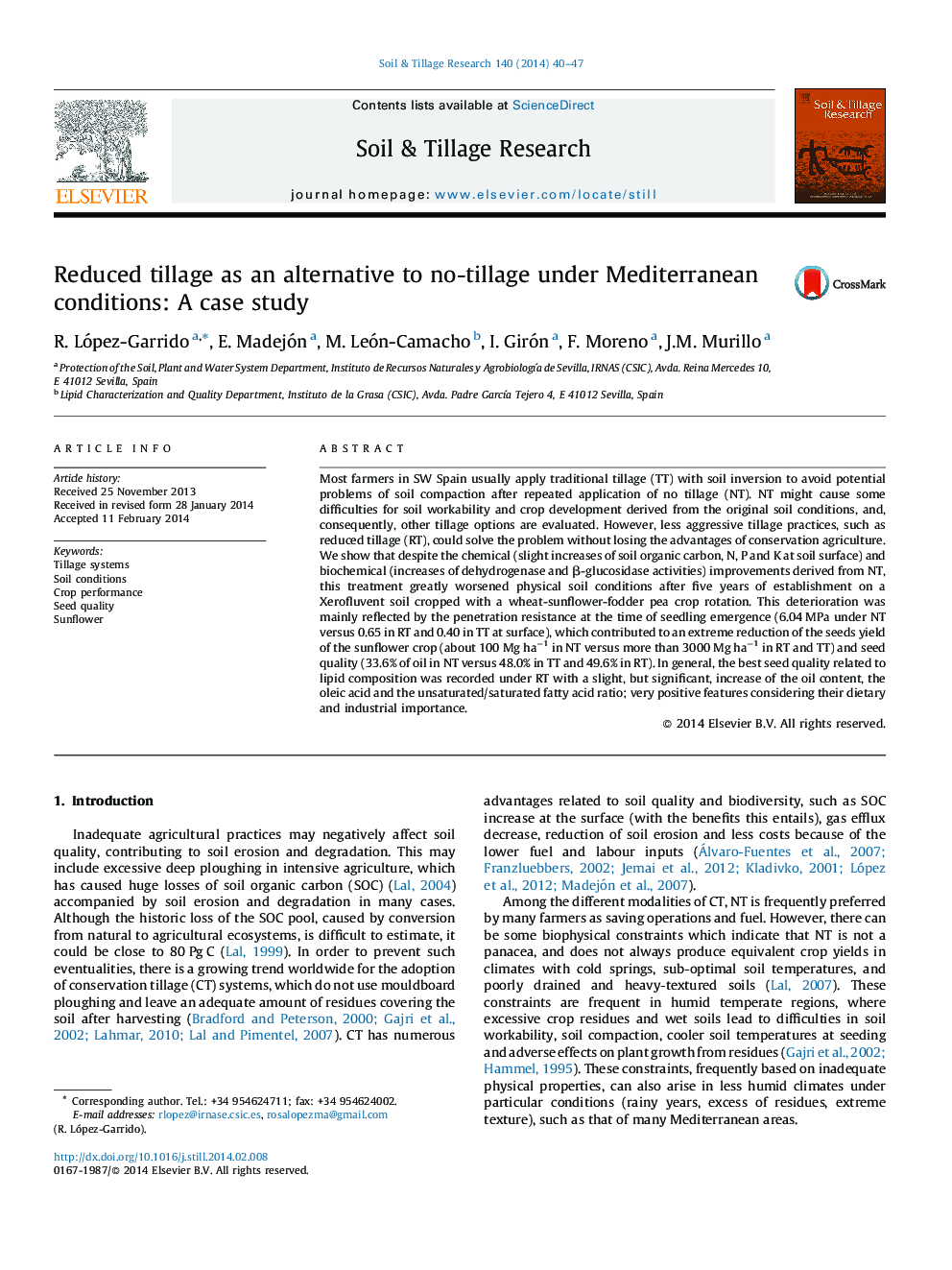| Article ID | Journal | Published Year | Pages | File Type |
|---|---|---|---|---|
| 305743 | Soil and Tillage Research | 2014 | 8 Pages |
•No-tillage increased soil compaction (penetration resistance) limiting the seedling emergence.•Crop yield and seed quality (sunflower) were extremely low under no-tillage.•Reduced-tillage (chiselling) solved these constraints without resorting to soil inversion.
Most farmers in SW Spain usually apply traditional tillage (TT) with soil inversion to avoid potential problems of soil compaction after repeated application of no tillage (NT). NT might cause some difficulties for soil workability and crop development derived from the original soil conditions, and, consequently, other tillage options are evaluated. However, less aggressive tillage practices, such as reduced tillage (RT), could solve the problem without losing the advantages of conservation agriculture. We show that despite the chemical (slight increases of soil organic carbon, N, P and K at soil surface) and biochemical (increases of dehydrogenase and β-glucosidase activities) improvements derived from NT, this treatment greatly worsened physical soil conditions after five years of establishment on a Xerofluvent soil cropped with a wheat-sunflower-fodder pea crop rotation. This deterioration was mainly reflected by the penetration resistance at the time of seedling emergence (6.04 MPa under NT versus 0.65 in RT and 0.40 in TT at surface), which contributed to an extreme reduction of the seeds yield of the sunflower crop (about 100 Mg ha−1 in NT versus more than 3000 Mg ha−1 in RT and TT) and seed quality (33.6% of oil in NT versus 48.0% in TT and 49.6% in RT). In general, the best seed quality related to lipid composition was recorded under RT with a slight, but significant, increase of the oil content, the oleic acid and the unsaturated/saturated fatty acid ratio; very positive features considering their dietary and industrial importance.
